
Mexico, Central and South America
This region relies less on the export of both manufactured goods and natural resources than the world average; merchandise exports from the continent were 16% of GDP on an exchange rate basis, compared to 25% for the world as a whole. Brazil (the seventh largest economy in the world and the largest in South America) leads in terms of merchandise exports at $251 billion, followed by Venezuela at $93 billion, Chile at $86 billion, and Argentina at $84 billion.
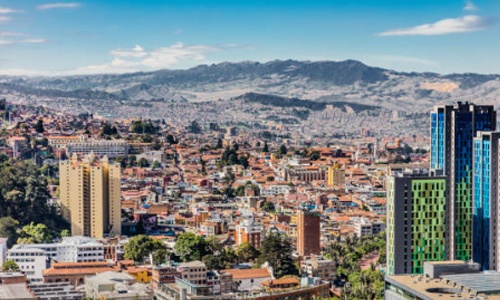
Bogota, Columbia
Bogotá is the main economic and industrial center of Colombia. The city is one of the largest industrial centers in Latin America. The Colombian government fosters the import of capital goods, Bogotá being one of the main destinations of these imports. This is due in part to its geographical location, which makes the city a strategic point in terms of logistics, since transportation of goods to other parts of the country is relatively fast. The World Cities Study Group and Network (GaWC) from the United Kingdom ranks Bogotá as a beta level city, a medium rankings. Beta level cities are important world cities that are instrumental in linking their region or state into the world economy. Despite the bad reputation Colombia bore in the 1980s and early 1990s, tourism in Bogotá has increased since the 2000s due to aggressive publicity campaigns and improvements in both infrastructure and safety. The Instituto Distrital de Turismo (District Institute of Tourism) was created with the goal of making Bogotá a sustainable tourist destination.
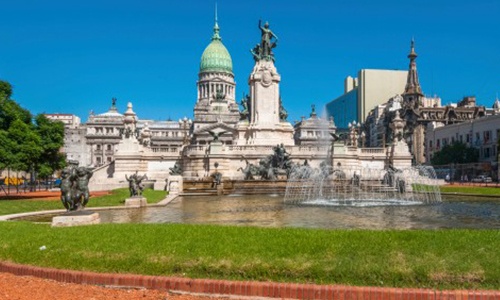
Buenos Aires, Argentina
Buenos Aires is the political, financial, industrial, commercial, and cultural hub of Argentina. Its port is one of the busiest in South America; navigable rivers by way of the Rio de la Plata connect the port to north-east Argentina, Brazil, Uruguay and Paraguay. As a result it serves as the distribution hub for a vast area of the south-eastern region of the continent. Tax collection related to the port has caused many political problems in the past. The economy in the city proper alone, measured by Gross Geographic Product (adjusted for purchasing power), totals US$ 84.7 billion (US$ 34,200 per capita) and amounts to nearly a quarter of Argentina’s as a whole. Metro Buenos Aires, according to one well-quoted study, constitutes the 13th largest economy among the world’s cities. The Buenos Aires Human Development Index is likewise high by international standards. The city’s services sector is diversified and well-developed by international standards, and accounts for 76% of its economy (compared to 59% for all of Argentina’s). Advertising, in particular, plays a prominent role in the export of services at home and abroad. The financial and real-estate services sector is the largest, however, and contributes to 31% of the city’s economy. Finance (about a third of this) in Buenos Aires is especially important to Argentina’s banking system, accounting for nearly half the nation’s bank deposits and lending. Nearly 300 hotels and another 300 hostels and bed & breakfasts are licensed for Tourism in Buenos Aires, and nearly half the rooms available were in four-star establishments or higher. Manufacturing is, nevertheless, still prominent in the city’s economy (16%) and, concentrated mainly in the southside, it benefits as much from high local purchasing power and a large local supply of skilled labor as it does from its relationship to massive agriculture and industry just outside the city limits themselves. Construction activity in Buenos Aires has historically been among the most dramatic indicators of national economic fortunes (see table at right), around 3 million m² (32 million ft²) of construction has been authorized annually. The Port of Buenos Aires handles over 11 million revenue tons annually, and Dock Sud, just south of the city proper, handles another 17 million metric tons.
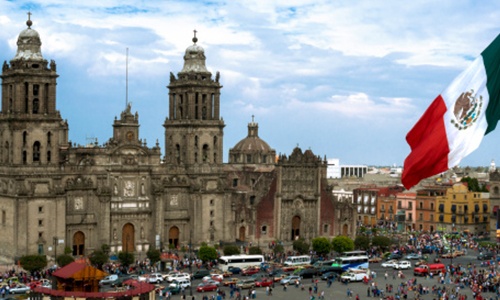
Mexico City, Mexico
Mexico City is one of the most important economic hubs in Latin America. The city proper (Federal District) produces 21.8% of the country’s gross domestic product. According to a study conducted by PricewaterhouseCoopers, Mexico City had a GDP of $390 billion, ranking as the eighth richest city in the world after the greater areas of Tokyo, New York, Los Angeles, Chicago, Paris, London and Osaka/Kobe, and the richest in the whole of Latin America, as measured by the GDP of the entire Metropolitan area. making Mexico City alone the 30th largest economy in the world. Mexico City is the greatest contributor to the country’s industrial GDP (15.8%) and also the greatest contributor to the country’s GDP in the service sector (25.3%). Due to the limited non-urbanized space at the south – most of which is protected through environmental laws – the contribution of the Federal District in agriculture is the smallest of all federal entities in the country. Mexico City has one of the world’s fastest-growing economies and its GDP is set to double. Mexico City has an HDI index of 0.915 identical to that of the Republic of Korea. The level of household expenditure in Mexico City is close to that of an average household in Germany or Japan. The top twelve percent of GDP per capita holders in the city had a mean disposable income of US $98,517. The high spending power of Mexico City inhabitants makes the city attractive for companies offering prestige and luxury goods
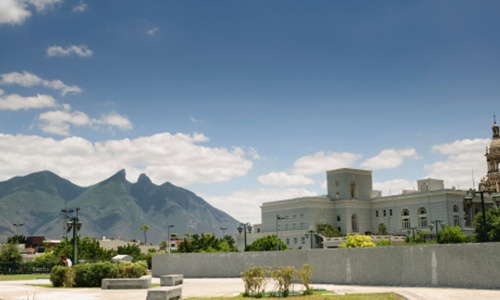
Monterrey, Mexico
Monterrey is a major industrial center in northern Mexico, producing a GDP of 78.5 billion US dollars. The city’s GDP per capita is 607,042 Mexican pesos or $46,634 US dollars. The city is rated by Fortune magazine as the best city in Latin America for business and is currently ranked third best by the América Economía magazine. The city has prominent positions in sectors such as steel, cement, glass, auto parts, and brewing. The city’s economic wealth has been attributed in part to its proximity with the United States-Mexican border and economic links to the United States. Industrialization was accelerated in the mid-19th century by the Compañia Fundidora de Fierro y Acero Monterrey, a steel-processing company. Today, Monterrey is home to transnational conglomerates such as Cemex (the world’s third largest cement company), FEMSA (Coca-Cola Latin America, largest independent Coca-Cola bottler in the world), Alfa (petrochemicals, food, telecommunications and auto parts), Axtel (telecommunications), Vitro (glass), Selther (leading mattress and rest systems firm in Latin America), Gruma (food), and Banorte (financial services). The FEMSA corporation owned a large brewery, the Cuauhtémoc Moctezuma Brewery (Cervecería Cuauhtémoc Moctezuma) that produces the brands Sol, Tecate, Indio, Dos Equis and Carta Blanca among others, in the beginning of the year Cuauhtémoc Moctezuma Brewery was sold to Dutch-based company Heineken. By the end of the same year, there were more than 13,000 manufacturing companies, 55,000 retail stores, and more than 52,000 service firms in Monterrey.
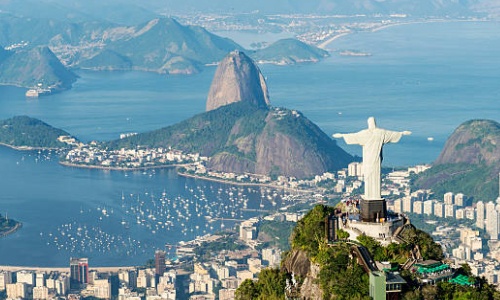
Rio De Janeiro, Brazil
Rio de Janeiro has the second largest GDP of any city in Brazil, surpassed only by São Paulo. According to the IBGE, it is approximately US$ 201 billion, equivalent to 5.1% of the national total. The services sector comprises the largest portion of GDP (65.52%), followed by commerce (23.38%), industrial activities (11.06%) and agriculture (0.04%). Greater Rio de Janeiro, as perceived by the IBGE, has a GDP of US$ 187.374.116.000, constituting the second largest hub of national wealth. Per capita GDP is US$ 11,786. It concentrates 68% of the state’s economic strength and 7.91% of all goods and services produced in the country. Taking into consideration the network of influence exerted by the urban metropolis (which covers 11.3% of the population), this share in GDP rises to 14.4%. For many years brings together the second largest industrial hub of Brazil, with oil refineries, shipbuilding industries, steel, metallurgy, petrochemical, gas, chemical, textile, printing, publishing, pharmaceutical, beverages, cement and furniture. However, the last decades indicated a sharp transformation in its economic profile, which is acquiring more and more shades of a major national hub of services and businesses. The Stock Exchange of Rio de Janeiro (BVRJ), which currently trades only government securities, was the first stock exchange founded in Brazil in 1845 and located in the central region. Rio de Janeiro became an attractive place for companies to locate when it was the capital of Brazil, as important sectors of society and of the government were present in the city. The city was chosen as headquarters for state-owned companies such as Petrobras, Eletrobras, Caixa Econômica Federal and Vale. After the transfer of the capital to Brasília, it kept attracting more companies, especially after the discovery of oil in the Campos Basin, which produces most of the total oil production of Brazil. This made many oil and gas companies to be based in Rio de Janeiro, such as the Brazilian branches of Shell, EBX and Esso. The headquarters of BNDES, an important state institution, is also in Rio de Janeiro. The city is also the headquarters of large telecom companies, such as Intelig, Oi and Embratel. Rio ranks second nationally in industrial production and second financial and service center, trailing only São Paulo. The city’s industries produce processed foods, chemicals, petroleum products, pharmaceuticals, metal products, ships, textiles, clothing, and furniture. The service sector dominates the economy, however, and includes banking and the second most active stock market in Brazil, the Bolsa da Valores do Brasil.
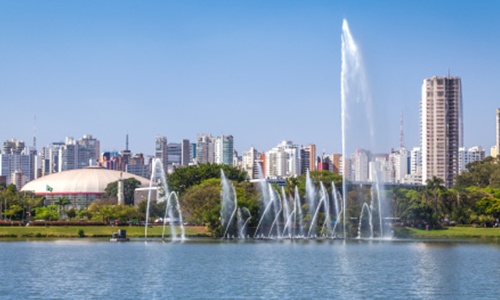
São Paulo, Brazil
São Paulo is considered the “financial capital of Brazil”, as it is the location for the headquarters of many major corporations and the country’s most renowned banks and financial institutions. São Paulo is Brazil’s highest GDP city and the 10th largest in the world, using Purchasing power parity. According to data of IBGE, its gross domestic product (GDP) is R$ 450 billion, approximately US$220 billion, 12.26% of Brazilian GDP and 36% of all production of goods and services of the State of São Paulo. According to PricewaterhouseCoopers average annual economic growth of the city is 4.2%. São Paulo also has a large “informal” economy. The city of São Paulo collects R$ 90 billion in taxes and the city budget is R$ 15 billion. The city has 1,500 bank branches and 70 shopping malls. The São Paulo Stock Exchange (BM&F Bovespa) is Brazil’s official stock and bond exchange. It is the largest stock exchange in Latin America, trading about R$ 6 billion (US$ 3.5 billion) every day. São Paulo’s economy is going through a deep transformation. Once a city with a h2 industrial character, São Paulo’s economy has followed the global trend of shifting to the tertiary sector of the economy, focusing on services. The city is unique among Brazilian cities for its large number of foreign corporations. 63% of all the international companies with business in Brazil have their head offices in São Paulo. São Paulo has the largest concentration of German businesses worldwide and is the largest Swedish industrial hub alongside Gothenburg. São Paulo ranked second after New York in FDi magazine’s bi-annual ranking of Cities of the Future in the Americas, and was named the Latin American City of the Future, overtaking Santiago de Chile, the first city in the previous ranking. Santiago now ranks second, followed by Rio de Janeiro. The city of São Paulo is home to research and development facilities and attracts companies due to the presence of several regionally renowned universities. Science, technology and innovation is leveraged by the allocation of funds from the state government, mainly carried out by means of the Foundation to Research Support in the State of São Paulo (Fundação de Amparo à Pesquisa do Estado de São Paulo – FAPESP), one of the main agencies promoting scientific and technological research.





